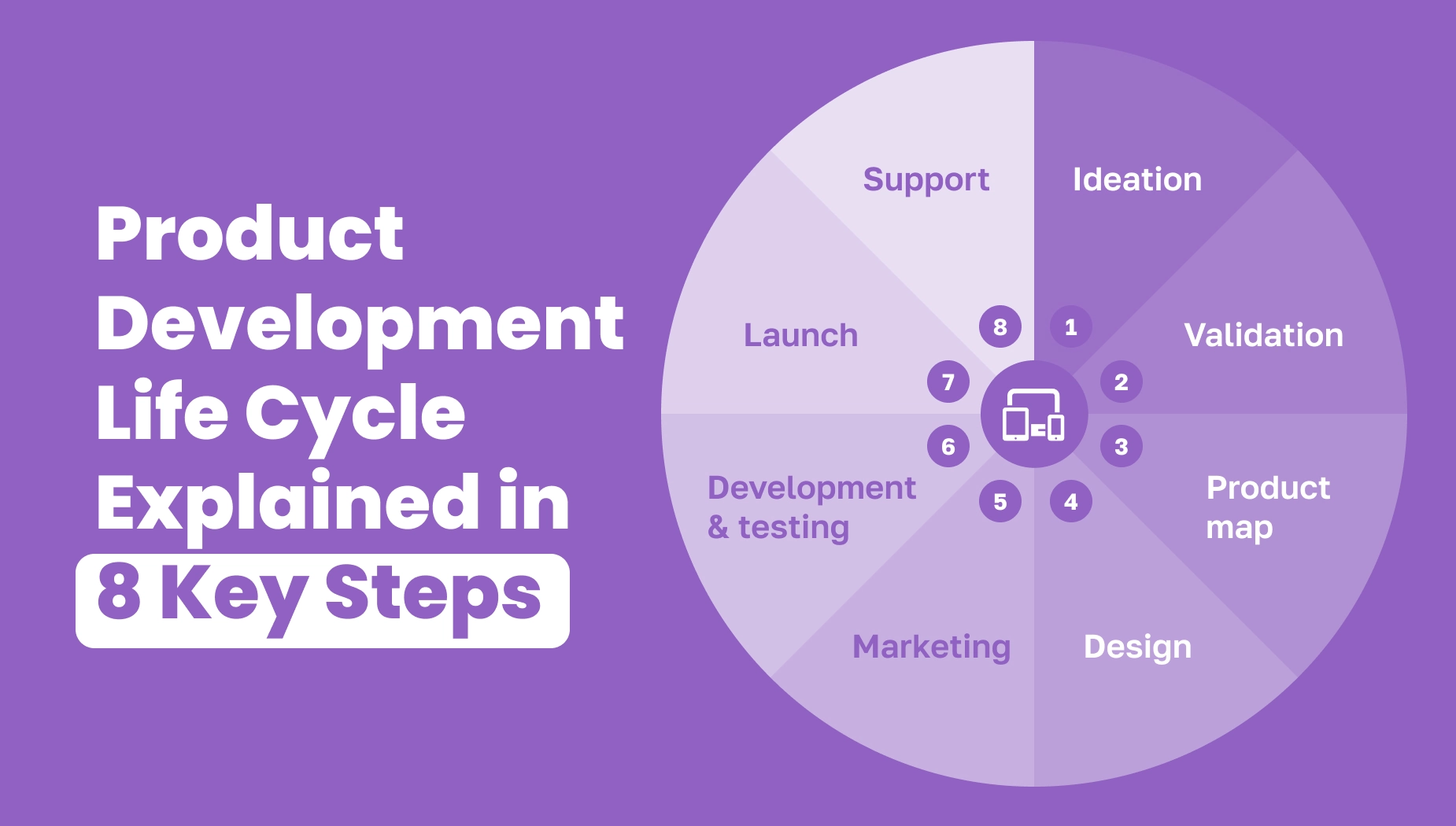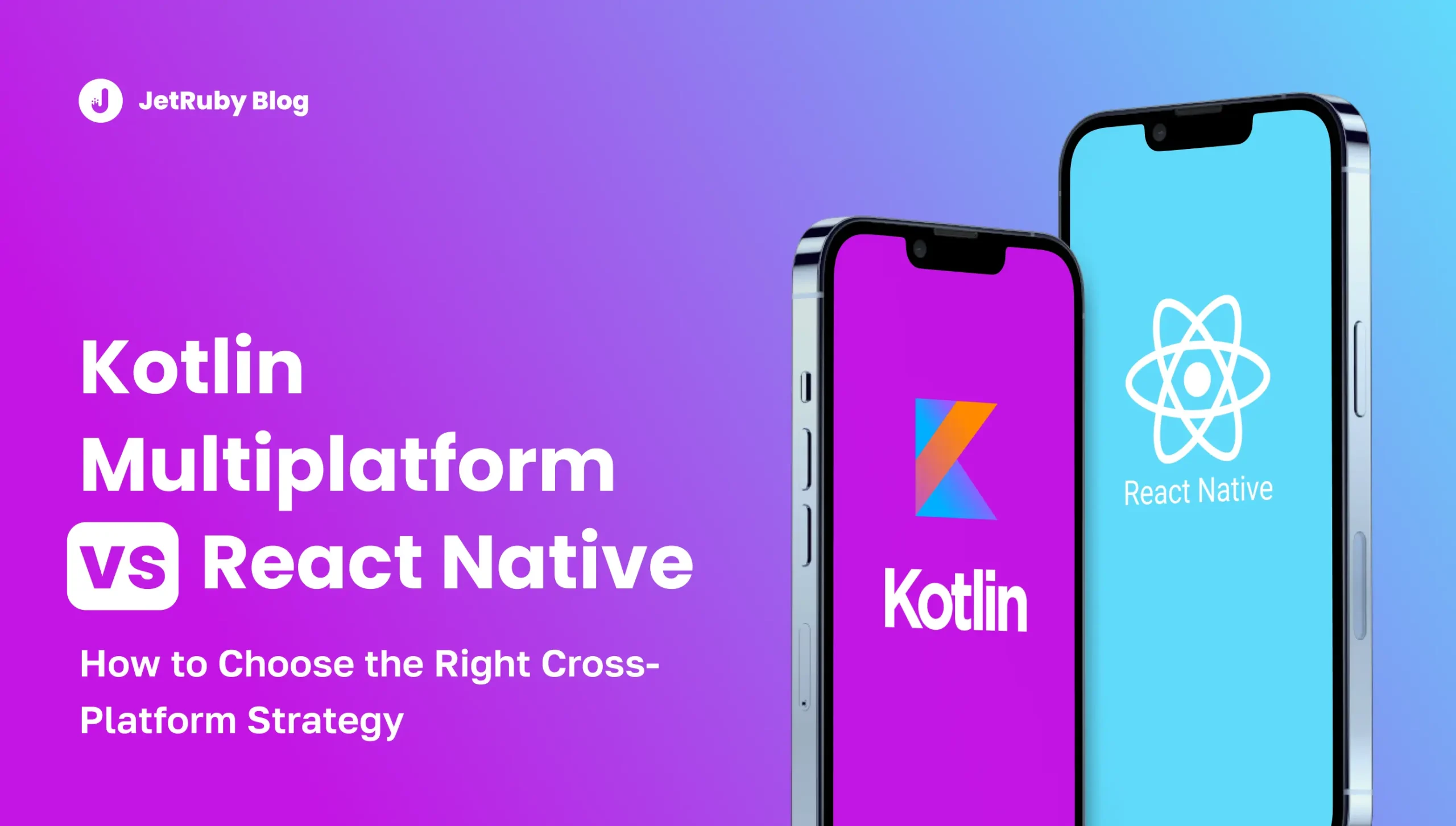Table of Contents
What Is the Product Development Life Cycle (PDLC) in the first place?
Let’s start with the basics.
The product development lifecycle is the process of turning an idea into a real, tangible product. It’s a step-by-step approach that helps you plan, design, build, and launch your product in a sensible way.
You might have also heard the term product life cycle before. That’s different.
The product life cycle is about what happens after your product is launched, meaning how it grows, matures, and eventually declines.
On the other hand, the product development life cycle is all about the journey from idea to launch.
8 Key Stages of the Product Development Life Cycle
In this article, we’ll walk you through each step of the product development cycle.
We’ll explain what happens at every stage and why it matters.
Let’s dive in.
Step #1. Ideation
Every great product starts with an idea. The ideation stage is where you brainstorm and explore possibilities.
When brainstorming, focus on these four key areas to get the most out of your discussion:
1. Strengths
What makes your product special? Think about its unique features and why people would care.
Does it solve a problem better than anything else? Is it affordable, eco-friendly, or super convenient? Highlight what sets it apart.
2. Weaknesses
Be real about the downsides.
Are there flaws in the design, high costs, or usability issues? What might turn customers off? Acknowledging weaknesses early helps you tackle them head-on.
3. Opportunities
Can your product do more than you originally planned? Maybe it fits into a new market or aligns with a trending topic (like sustainability or AI). Could partnerships or add-ons create extra value? Think outside the box!
4. Risks
What could go wrong? Maybe the market isn’t ready, competitors copy you, or production hits a snag. Are there financial or legal hurdles? Identifying risks early helps you plan around them.
Quick tips for brainstorming:
- Include diverse voices — different perspectives spark better ideas.
- Keep it open — no idea is too wild.
- Focus on solutions — turn weaknesses and risks into opportunities.
- Write everything down — even odd ideas might inspire something great later.
Step #2. Validation
Once you have an idea, you need to make sure it’s worth pursuing. That’s where validation comes in. This stage is all about testing your concept to see if it has potential.
You might:
- Create a simple version of your product (called a prototype) to show to people.
- Run surveys or focus groups to get feedback.
- Test different versions of your idea to see which one works best.
- Consider hosting providers at the early stages.
Validation helps you avoid wasting time and money on something that might not succeed.
To test if your idea works, think like a user. What challenges might they face?
Michael Skok’s 4U framework is a great way to evaluate this:
- Unavoidable: Is the problem unavoidable? Can your product succeed without solving it?
- Urgent: How urgent is the problem? Is it blocking other parts of your product?
- Unworkable: Is the problem too costly or impractical to fix from a business perspective?
- Undeserved: Is this a common issue in similar products? How can you solve it to stand out?
This approach helps you refine your product by focusing on real user needs.
If you come up with an understanding your solution doesn’t work as it planned, you can always pivot your startup.
Step #3. Product mapping
After validation, it’s time to plan out your product in detail. This is called product mapping. Think of it as creating a blueprint for your product.
You’ll:
- List all the features your product needs.
- Break the project into smaller tasks.
- Set deadlines and milestones.
A good product map keeps everyone on the same page and helps you stay on track.
Step #4. Additional market research
Before you start designing and building your product, it’s a good idea to dig deeper into your market. This stage of PDLC involves:
- Understanding your target audience:who they are, what they need, and how they behave.
- Figuring out what makes your product special (this is called your unique value proposition).
- Planning how you’ll promote your product, including SEO and sales strategies.
Not every product needs this step, but it’s especially helpful for the competition analysis to find gaps in the market.
Step #5. Product design and prototyping
Now it’s time to bring your product to life visually. The design stage is where you create the look and feel of your product.
You’ll:
- Sketch out the layout and user interface (UI).
- Build a clickable prototype that people can interact with.
- Get feedback from stakeholders and make adjustments.
A prototype lets you test how your product will work and make improvements before you start building the real thing.
Step #6. Development and testing
This is where the magic happens. The development stage is when you build your product.
You’ll:
- Write the code and add all the features.
- Test the product to make sure it works as expected.
- Fix any bugs or issues.
Testing is a big part of this stage. You want to catch problems early so they don’t cause bigger issues later.
Step #7. Launch
After all the hard work, it’s time to share your product with the world. The launch stage involves:
- Releasing your product on the right platforms (like app stores or websites, including alternative app stores).
- Creating marketing materials to spread the word.
- Monitoring the launch to make sure everything goes smoothly.
A successful launch takes careful planning.
Step #8. Post-launch support and improvement
Your work isn’t done after the launch. The PDLC post-launch stage is about making sure your product continues to succeed.
You’ll:
- Listen to feedback from users.
- Make updates and improvements based on what you learn.
- Provide support to keep the product running smoothly.
For example, after launching a mobile app, you need to keep an eye on how users interact with it. Their feedback can help make updates and fix bottlenecks.
Startup Growth Accelerated Accelerate your startup's growth with expert tech leadership! We guide your team, refine strategy, and guarantee timely, high-quality results.
Who Is Part of the Product Development Team?
Creating a product is a team effort. Here’s who you’ll need:
- Product/project Managers: They keep everything on track and make sure deadlines are met.
- Designers: They create the look and feel of the product.
- Developers: They build the product and write the code.
- QA engineers: They test the product to make sure it works well.
- Marketing specialists: They help promote the product and reach the right audience.
- Senior management: They make the big decisions and guide the overall strategy.
Each person plays a key role, and their teamwork makes the product successful.
Product Development with JetRuby
At JetRuby, we help businesses bring their ideas to life for over 15 years. We’ve worked with clients at every stage of the product development cycle, from the first spark of an idea to the final launch and beyond.
Our team combines technical expertise with a deep understanding of what users need so we can create products that truly make a difference.
JetRuby’s CTO as a Service provides you with seasoned technical leadership to guide and manage your IT processes.
Our in-house experts will also help develop your entire IT team and build personalized development plans (PDPs) for their sustainable growth.
The product development lifecycle is a powerful tool for turning ideas into reality. By following the listed steps, you can create products that people love and that stand the test of time.
If you’re ready to start your product development journey, we’re here to help.
Reach out to us today, and let’s create something amazing together!




